Markus Leinonen
Hierarchical MTC User Activity Detection and Channel Estimation with Unknown Spatial Covariance
Oct 16, 2023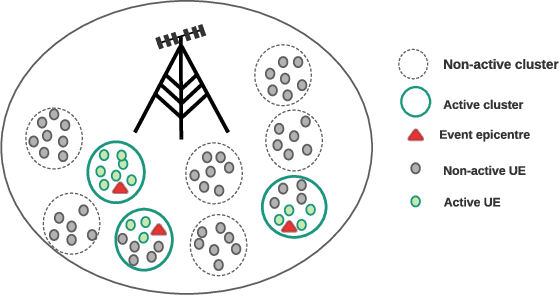
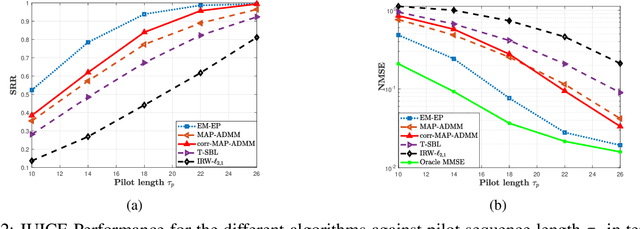

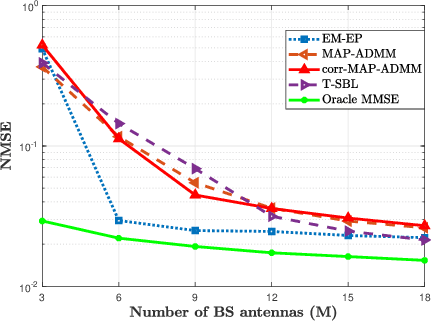
Abstract:This paper addresses the joint user identification and channel estimation (JUICE) problem in machine-type communications under the practical spatially correlated channels model with unknown covariance matrices. Furthermore, we consider an MTC network with hierarchical user activity patterns following an event-triggered traffic mode. Therein the users are distributed over clusters with a structured sporadic activity behaviour that exhibits both cluster-level and intra-cluster sparsity patterns. To solve the JUICE problem, we first leverage the concept of strong priors and propose a hierarchical-sparsity-inducing spike-and-slab prior to model the structured sparse activity pattern. Subsequently, we derive a Bayesian inference scheme by coupling the expectation propagation (EP) algorithm with the expectation maximization (EM) framework. Second, we reformulate the JUICE as a maximum a posteriori (MAP) estimation problem and propose a computationally-efficient solution based on the alternating direction method of multipliers (ADMM). More precisely, we relax the strong spike-and-slab prior with a cluster-sparsity-promoting prior based on the long-sum penalty. We then derive an ADMM algorithm that solves the MAP problem through a sequence of closed-form updates. Numerical results highlight the significant performance significant gains obtained by the proposed algorithms, as well as their robustness against various assumptions on the users sparse activity behaviour.
Optimal Semantic-aware Sampling and Transmission in Energy Harvesting Systems Through the AoII
Apr 03, 2023Abstract:We study a real-time tracking problem in an energy harvesting status update system with a Markov source under both sampling and transmission costs. The problem's primary challenge stems from the non-observability of the source due to the sampling cost. By using the age of incorrect information (AoII) as a semantic-aware performance metric, our main goal is to find an optimal policy that minimizes the time average AoII subject to an energy-causality constraint. To this end, a stochastic optimization problem is formulated and solved by modeling it as a partially observable Markov decision process. More specifically, to solve the problem, we use the notion of belief state and by characterizing the belief space, we cast the main problem as an MDP whose cost function is a non-linear function of the age of information (AoI) and solve it via relative value iteration. Simulation results show the effectiveness of the derived policy, with a double-threshold structure on the battery levels and AoI.
Joint Estimation of Clustered User Activity and Correlated Channels with Unknown Covariance in mMTC
Nov 30, 2022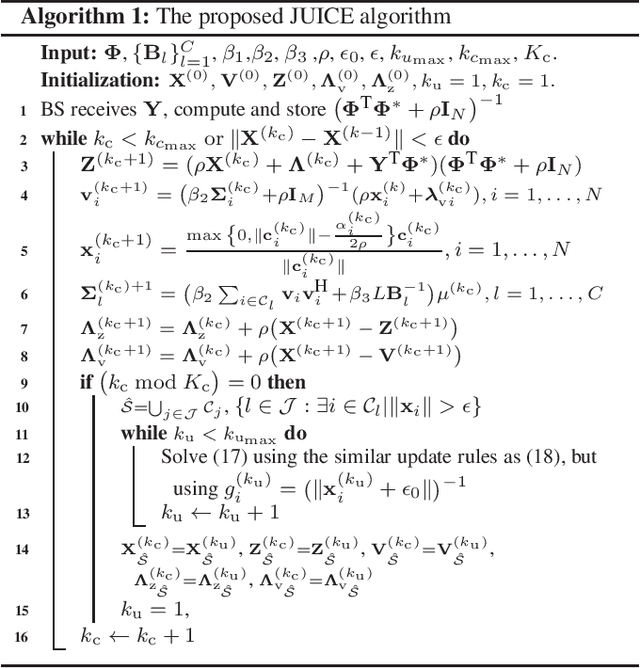
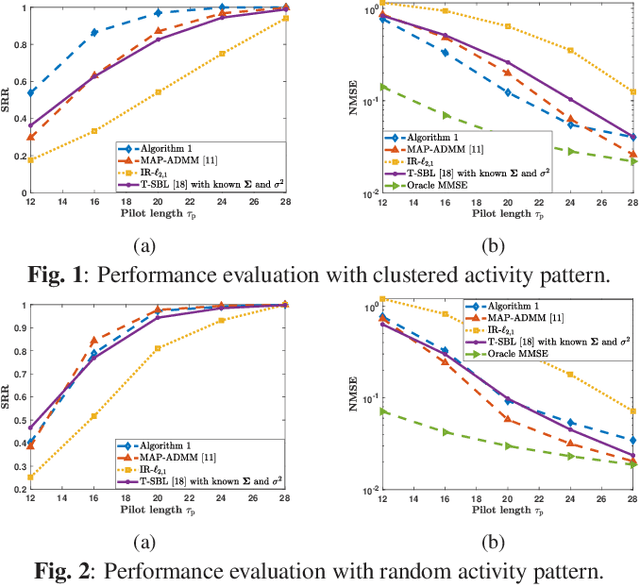
Abstract:This paper considers joint user identification and channel estimation (JUICE) in grant-free access with a \emph{clustered} user activity pattern. In particular, we address the JUICE in massive machine-type communications (mMTC) network under correlated Rayleigh fading channels with unknown channel covariance matrices. We formulate the JUICE problem as a maximum \emph{a posteriori} probability (MAP) problem with properly chosen priors to incorporate the partial knowledge of the UEs' clustered activity and the unknown covariance matrices. We derive a computationally-efficient algorithm based on alternating direction method of multipliers (ADMM) to solve the MAP problem iteratively via a sequence of closed-form updates. Numerical results highlight the significant improvements brought by the proposed approach in terms of channel estimation and activity detection performances for clustered user activity patterns.
Joint Coherent and Non-Coherent Detection and Decoding Techniques for Heterogeneous Networks
Sep 27, 2022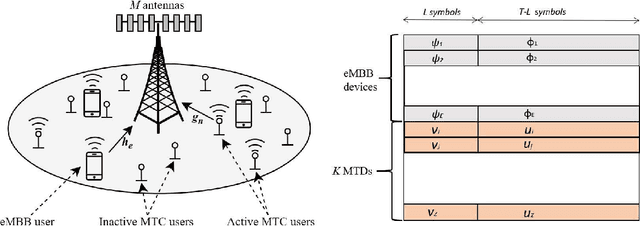
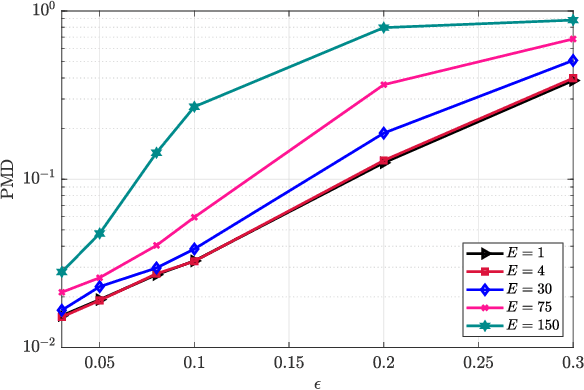
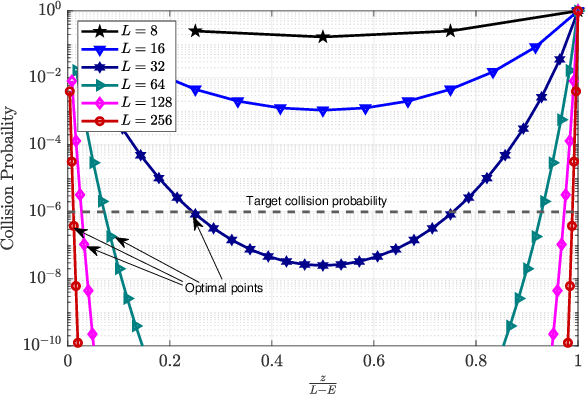
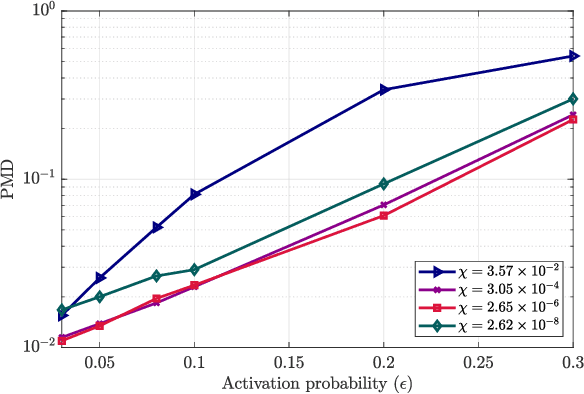
Abstract:Cellular networks that are traditionally designed for human-type communication (HTC) have the potential to provide cost effective connectivity to machine-type communication (MTC). However, MTC is characterized by unprecedented traffic in cellular networks, thus posing a challenge to its successful incorporation. In this work, we propose a unified framework for amicable coexistence of MTC and HTC. We consider a heterogeneous network where machine-type devices coexist with enhanced mobile broadband (eMBB) devices and propose transceiver techniques that promote efficient signal recovery from these devices. For this, we present an eMBB pilot and MTC data generation strategy that facilitates joint coherent decoding of eMBB data and non-coherent decoding of MTC data. Furthermore, we assess the feasibility of coexistence using receiver operating characteristics, outage probability, and normalized mean square error (NMSE). Our numerical results reveal that a harmonious coexistence of the heterogeneous services can be achieved with properly configured average signal-to-noise ratios and pilot length.
Query-Age-Optimal Scheduling under Sampling and Transmission Constraints
Sep 23, 2022
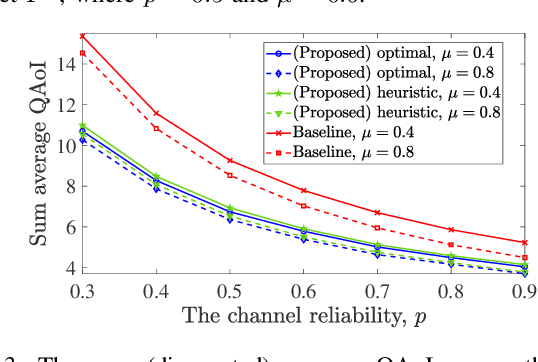
Abstract:This letter provides query-age-optimal joint sam- pling and transmission scheduling policies for a heterogeneous status update system, consisting of a stochastic arrival and a generate-at-will source, with an unreliable channel. Our main goal is to minimize the average query age of information (QAoI) subject to average sampling, average transmission, and per-slot transmission constraints. To this end, an optimization problem is formulated and solved by casting it into a linear program. We also provide a low-complexity near-optimal policy using the notion of weakly coupled constrained Markov decision processes. The numerical results show up to 32% performance improvement by the proposed policies compared with a benchmark policy.
Status Updating with an Energy Harvesting Sensor under Partial Battery Knowledge
Apr 12, 2022
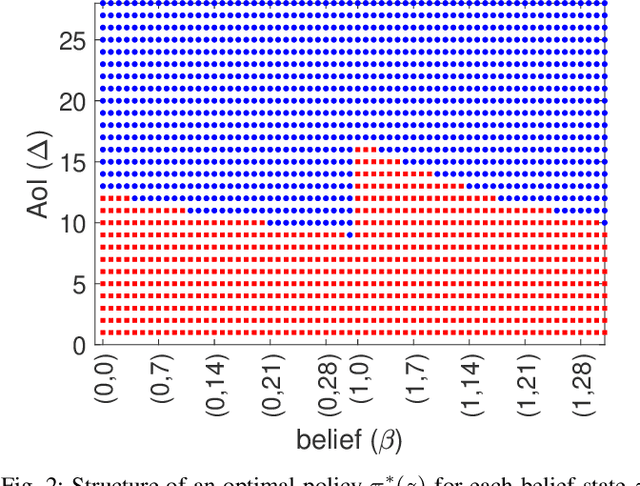
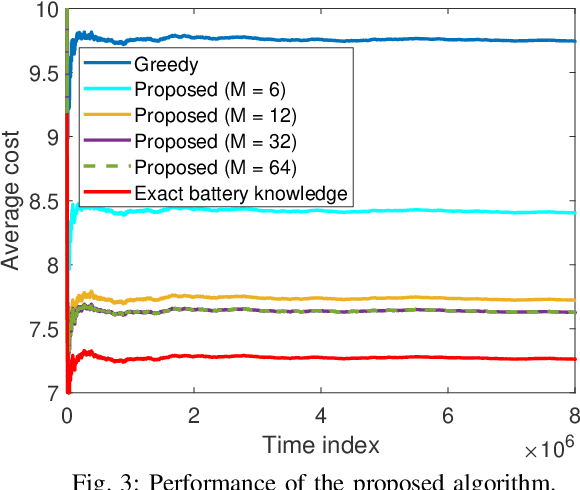

Abstract:We consider status updating under inexact knowledge of the battery level of an energy harvesting (EH) sensor that sends status updates about a random process to users via a cache-enabled edge node. More precisely, the control decisions are performed by relying only on the battery level knowledge captured from the last received status update packet. Upon receiving on-demand requests for fresh information from the users, the edge node uses the available information to decide whether to command the sensor to send a status update or to retrieve the most recently received measurement from the cache. We seek for the best actions of the edge node to minimize the average AoI of the served measurements, i.e., average on-demand AoI. Accounting for the partial battery knowledge, we model the problem as a partially observable Markov decision process (POMDP), and, through characterizing its key structures, develop a dynamic programming algorithm to obtain an optimal policy. Simulation results illustrate the threshold-based structure of an optimal policy and show the gains obtained by the proposed optimal POMDP-based policy compared to a request-aware greedy (myopic) policy.
Pilot Reuse for mMTC with Spatially Correlated MIMO Channels: A Channel Charting Approach
Mar 13, 2022

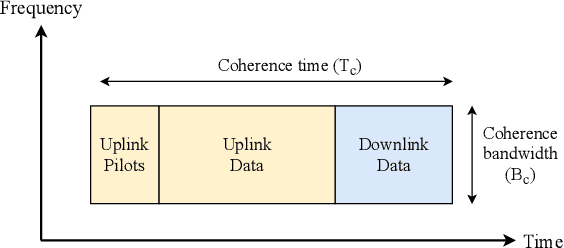

Abstract:Massive multiple-input multiple-output (mMIMO) technology is a way to increase the spectral efficiency of machine-type communications (MTC). To exploit the benefits from large antenna arrays, accurate channel estimation through pilot signals is needed. Massive MTC systems cannot avoid pilot reuse due to the enormous numbers of connected devices. We propose a pilot reuse algorithm based on channel charting (CC) to mitigate pilot contamination in a multi-sector single-cell massive MTC system having spatially correlated channels. We show that after creating an interference map via CC, a simple strategy to allocate the pilot sequences can be implemented. The simulation results show that the CC-based pilot reuse strategy improves channel estimation accuracy, which subsequently improves the symbol detection performance and increases the spectral efficiency compared to other existing schemes. Moreover, the performance of the CC pilot assignment method approaches that of exhaustive search pilot assignment for small network setups.
Dynamic Scheduling for Minimizing AoI in Resource-Constrained Multi-Source Relaying Systems with Stochastic Arrivals
Mar 10, 2022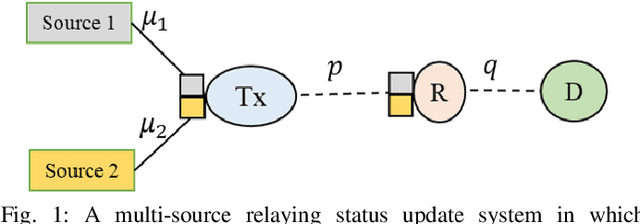
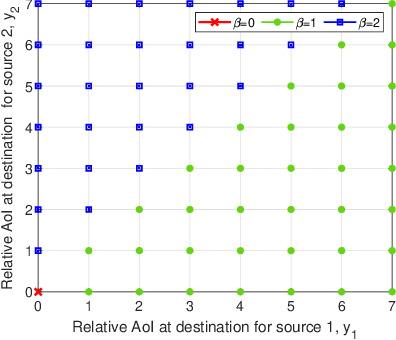
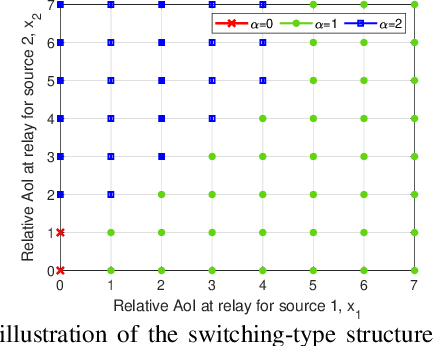

Abstract:We consider a multi-source relaying system where the independent sources randomly generate status update packets which are sent to the destination with the aid of a relay through unreliable links. We develop scheduling policies to minimize the sum average age of information (AoI) subject to transmission capacity and long-run average resource constraints. We formulate a stochastic optimization problem and solve it under two different scenarios regarding the knowledge of system statistics: known environment and unknown environment. For the known environment, a constrained Markov decision process (CMDP) approach and a drift-plus-penalty method are proposed. The CMDP problem is solved by transforming it into an MDP problem using the Lagrangian relaxation method. We theoretically analyze the structure of optimal policies for the MDP problem and subsequently propose a structure-aware algorithm that returns a practical near-optimal policy. By the drift-plus-penalty method, we devise a dynamic near-optimal low-complexity policy. For the unknown environment, we develop a deep reinforcement learning policy by employing the Lyapunov optimization theory and a dueling double deep Q-network. Simulation results are provided to assess the performance of our policies and validate the theoretical results. The results show up to 91% performance improvement compared to a baseline policy.
On-Demand AoI Minimization in Resource-Constrained Cache-Enabled IoT Networks with Energy Harvesting Sensors
Jan 28, 2022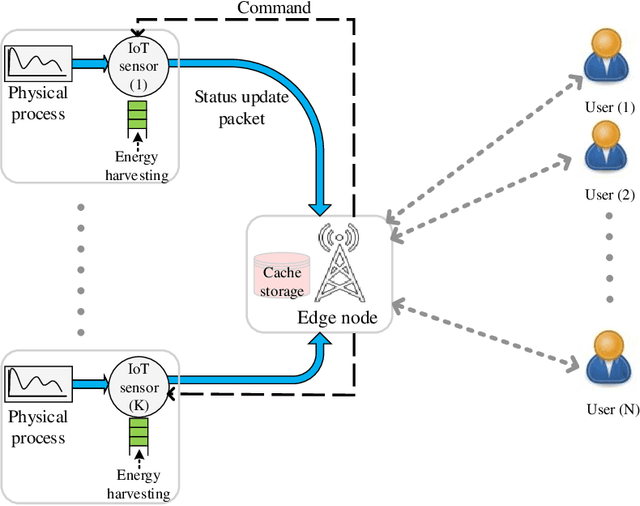

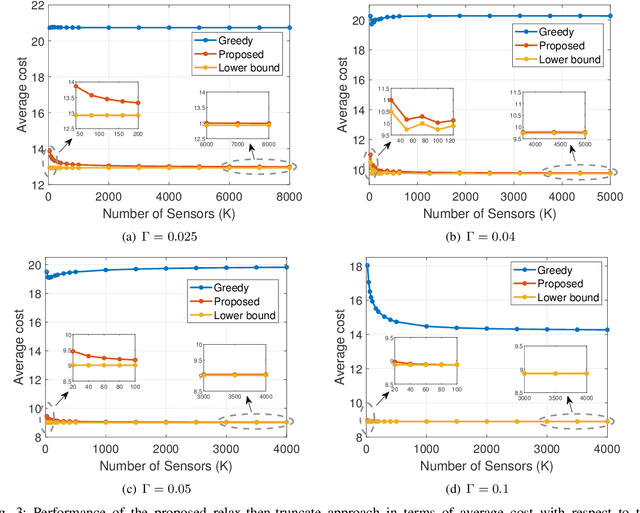

Abstract:We consider a resource-constrained IoT network, where multiple users make on-demand requests to a cache-enabled edge node to send status updates about various random processes, each monitored by an energy harvesting sensor. The edge node serves users' requests by deciding whether to command the corresponding sensor to send a fresh status update or retrieve the most recently received measurement from the cache. Our objective is to find the best actions of the edge node to minimize the average age of information (AoI) of the received measurements upon request, i.e., average on-demand AoI, subject to per-slot transmission and energy constraints. First, we derive a Markov decision process model and propose an iterative algorithm that obtains an optimal policy. Then, we develop an asymptotically optimal low-complexity algorithm -- termed relax-then-truncate -- and prove that it is optimal as the number of sensors goes to infinity. Simulation results illustrate that the proposed relax-then-truncate approach significantly reduces the average on-demand AoI compared to a request-aware greedy (myopic) policy and also depict that it performs close to the optimal solution even for moderate numbers of sensors.
User Activity Detection and Channel Estimation of Spatially Correlated Channels via AMP in Massive MTC
Dec 08, 2021
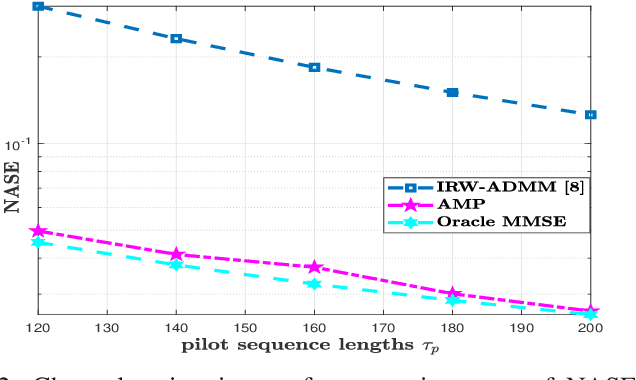
Abstract:This paper addresses the problem of joint user identification and channel estimation (JUICE) for grant-free access in massive machine-type communications (mMTC). We consider the JUICE under a spatially correlated fading channel model as that reflects the main characteristics of the practical multiple-input multiple-output channels. We formulate the JUICE as a sparse recovery problem in a multiple measurement vector setup and present a solution based on the approximate message passing (AMP) algorithm that takes into account the channel spatial correlation. Using the state evolution, we provide a detailed theoretical analysis on the activity detection performance of AMP-based JUICE by deriving closed-from expressions for the probabilities of miss detection and false alarm. The simulation experiments show that the performance predicted by the theoretical analysis matches the one obtained by the numerical results.
 Add to Chrome
Add to Chrome Add to Firefox
Add to Firefox Add to Edge
Add to Edge